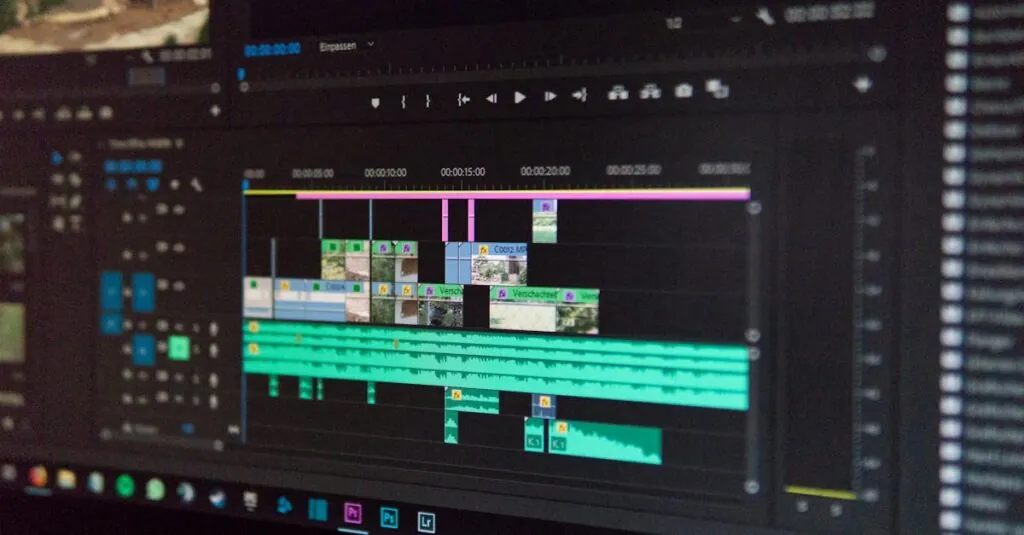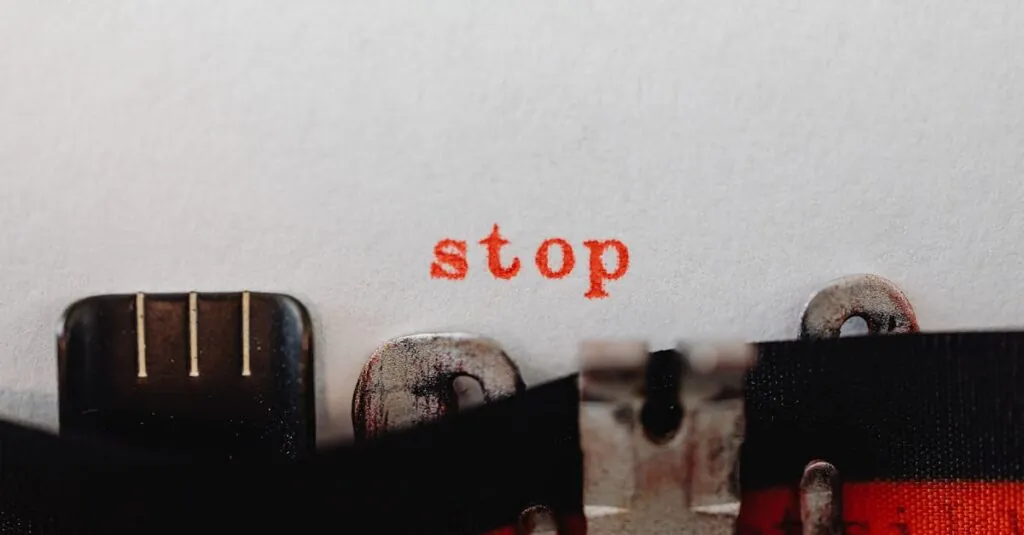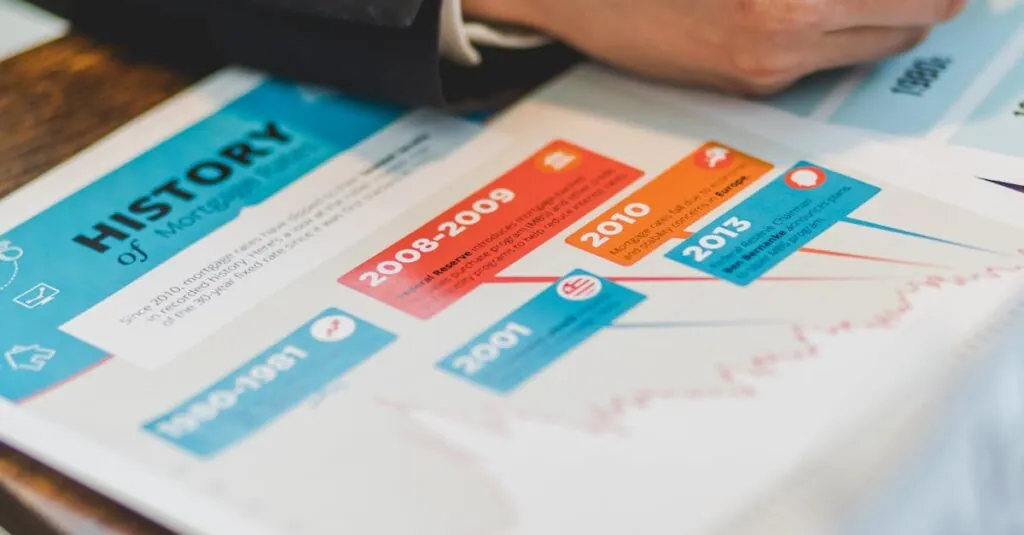Drowning in debt feels like trying to swim with a brick tied to your ankle. But fear not! Crafting a budget to tackle that debt can turn you from a financial flounderer into a money maestro. It’s time to take charge and wave goodbye to those pesky bills that seem to multiply faster than rabbits.
Imagine a life where your paycheck doesn’t vanish before you can say “credit card bill.” With a solid budget, you can transform your financial chaos into a well-orchestrated symphony. By prioritizing your spending and making every dollar work for you, you’ll not only pay off debt but also gain peace of mind. So grab your calculator and let’s get started on the journey to financial freedom—because who wouldn’t want to kick debt to the curb and strut around like a financial superstar?
Understanding Debt and Its Types
Understanding debt and its various types is essential for effective financial management. Individuals must recognize the distinctions to create an effective budget.
Secured vs. Unsecured Debt
Secured debt is backed by collateral, such as a home or vehicle. Lenders often use this collateral to mitigate their risk. Mortgage loans and auto loans exemplify secured debts. Unsecured debt lacks collateral, making it riskier for lenders. Credit cards and personal loans fit into this category. Individuals face higher interest rates for unsecured debt due to increased risk for lenders. Prioritizing the repayment of high-interest debt can provide significant financial relief.
Good Debt vs. Bad Debt
Good debt contributes to long-term financial benefits, such as student loans for education or mortgages for property investment. These types of debt can enhance earning potential or build wealth. Bad debt, on the other hand, often leads to financial strain, including credit card debt used for non-essential items. Examples of bad debt include high-interest loans for luxury items. Recognizing the differences between good and bad debt helps individuals prioritize payments effectively, promoting financial wellness.
Creating a Budget to Pay Off Debt
Creating a budget is essential for managing debt effectively. This process empowers individuals to visualize their financial situation and prioritize repayment strategies.
Assessing Your Current Financial Situation
Start by gathering all financial statements, including income sources, expenses, and outstanding debts. Understanding total income helps in determining what’s available for debt repayment. Track monthly expenses to identify necessary versus discretionary spending. List all debts, noting their amounts, interest rates, and minimum payments. Such clarity provides a snapshot of financial health, allowing for better-informed decisions.
Setting Realistic Payment Goals
Set specific repayment goals for each debt based on interest rates and balances. Focus on high-interest debts first to reduce overall costs. Aiming for small, achievable targets motivates continued progress. Individuals often benefit from breaking larger debts into manageable monthly payments. Allocate a portion of income toward these goals consistently. Regularly reviewing and adjusting these goals ensures they remain attainable and relevant to changing financial circumstances.
Strategies for Effective Debt Repayment
Effective debt repayment strategies improve the ability to regain financial control. Two popular methods for tackling debt include the Snowball Method and the Avalanche Method.
Snowball Method
The Snowball Method involves paying off the smallest debts first. Individuals list their debts from smallest to largest. They then focus additional payments on the smallest balance while making minimum payments on larger debts. This approach builds momentum as each small debt is eliminated, resulting in quick wins that boost motivation. Once the smallest debt is paid off, attention shifts to the next smallest debt. The psychological benefit of achieving small victories encourages continued progress toward becoming debt-free.
Avalanche Method
The Avalanche Method prioritizes debts based on interest rates. Debts are organized from highest to lowest interest rate. Individuals direct extra funds toward the debt with the highest interest while maintaining minimum payments on others. This strategy reduces overall interest paid and shortens the repayment timeline more effectively than the Snowball Method. By focusing on high-interest debts, individuals can save money in the long run. After paying off the highest-rate debt, the focus shifts to the next highest, ensuring financial efficiency remains a priority.
Tools and Resources for Managing Your Budget
Managing a budget effectively requires the right tools and resources. Utilizing appropriate apps and seeking expert guidance can enhance financial clarity and control.
Budgeting Apps and Software
Numerous budgeting apps help users track expenses and stay on top of their finances. Popular options include Mint, which offers comprehensive budgeting features and automatic transaction categorization. YNAB (You Need A Budget) emphasizes proactive planning and encourages prioritization of each dollar spent. Users can connect bank accounts and monitor spending in real-time. Additionally, PocketGuard provides insights into disposable income, making it easier to allocate funds toward debt repayment. Using these tools simplifies budgeting and creates a clearer path toward financial stability.
Financial Counseling Services
Accessing financial counseling services offers valuable support for debt management. Nonprofit organizations, such as the National Foundation for Credit Counseling (NFCC), provide expert advice tailored to individual situations. These services often include budgeting assistance, debt management plans, and personalized strategies for repayment. Professionals help clients prioritize debts based on interest rates and amounts while developing actionable plans to tackle financial challenges. Many counseling services may charge minimal fees, making assistance more accessible. Seeking help from these resources can foster confidence and equip individuals with the tools needed to regain financial control.
Common Challenges and How to Overcome Them
Managing a budget for debt repayment presents various challenges. Identifying these hurdles and strategizing solutions helps maintain focus on financial goals.
Sticking to Your Budget
Success relies on commitment to the established budget. Regularly tracking expenses maintains awareness of financial habits. Prioritizing essential expenses over discretionary spending plays a key role. Flexibility in budgeting allows for adjustments based on real-time needs. Consistency facilitates progress, ensuring that each payment aligns with financial targets. Utilizing budgeting apps, like Mint or YNAB, can enhance accountability and simplicity.
Dealing with Unexpected Expenses
Unexpected costs can disrupt a carefully planned budget. Creating an emergency fund serves as a safety net against financial shocks. Setting aside a small amount monthly fosters resilience. Prioritizing flexibility within budget categories ensures that essential needs remain covered. Adjusting spending on non-essential items when surprises arise helps maintain financial goals. Seeking support from community resources or financial counseling can also provide guidance in navigating these challenges.
Taking control of debt is an empowering journey that requires commitment and strategy. By creating a well-structured budget individuals can not only navigate their financial challenges but also pave the way toward lasting financial stability. Utilizing effective debt repayment methods and leveraging budgeting tools can make the process smoother and more achievable.
Recognizing the nuances between different types of debt allows for smarter prioritization and informed decision-making. With the right mindset and resources anyone can transform their financial situation and move closer to a debt-free life. Embracing this proactive approach is a significant step toward achieving financial freedom and peace of mind.













